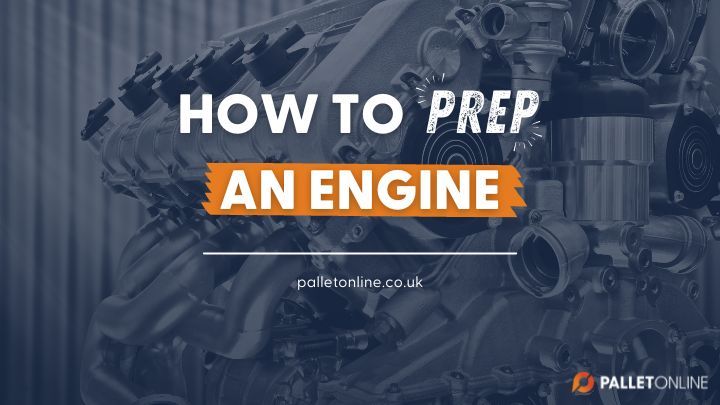How To Prepare An Engine For Safe Delivery
FACT: Engines are one of the most popular items shipped through pallet networks. But despite engines being shipped so frequently, people still aren't sure how to package them correctly.

The most common reason pallet couriers refuse engines is because they have not been prepared properly or packed well enough. Damage then becomes a much higher risk - not only to the engine itself, but to everyone involved in handing the pallet.
But what exactly is the right way to prepare an engine?
Learn how to protect your engine in transit with our simple expert preparation tips!
Avoid Cutting Corners!
All engines can prove costly to ship due to the weight and risk involved in transporting them, but this cost can grow if the engine hasn't been packaged or prepared carefully enough for transit.
For this reason, it's better not to cut corners when it comes to the safety of your engine!
Rushing the packing process will only increase the chance of your engine becoming damaged, or worse-case scenario, your pallet courier refusing to handle it entirely.
Drain All Fluids from the Engine
If your engine has been used in the past, it will have contained oil. Even if you frain the oil tank entirely, there may be still be traces of oil, or even residual liquids in the pan.
You must drain as much fluid as possible from your engine before you position it on the pallet - that's ALL fluid, including water.

An engine that leaks doesn't just create a serious slip hazard for anyone tasked with handling it, it is also a huge fire risk as the fluids are highly flammable, so it's crucial that you take the time to drain your engine properly and thoroughly.
To do this, place an absorbent material underneath your engine and carefully drain the oil reservoir; The material should soak everything up with no spills!

Don't worry if you don't have any absorbent pads or cloths like the ones pictured. An old double-folded towel, carpet cut offs, or some cardboard will do the trick!
We'd recommend leaving the engine overnight on the absorbent material, allowing time for any residual liquids to clear up before placing your engine on the pallet.
Once you're confident that there's no more oil or water in the engine, you can then safely load it onto a pallet for transit.
Use Industrial-Standard Ratchet Straps
We all know that engines aren't cheap! The last thing you'd want is it coming loose or even falling off the pallet.
But did you know that by using additional support like ratchet straps, you can easily make sure your engine doesn't tip or move in transit?
You can use industrial-standard straps or steel banding to tie your engine down; Both will hold the weight of your engine without snapping.

As with all pallet networks, goods can be moved several times before reaching the delivery point, so strapping your engine to the pallet will maximise its safety!
We'd recommend using at least 2 ratchet straps or steel bands, but you can always use more for added protection.
And where possible, try to avoid using rope as this can't be tightened very well and is prone to coming loose!
Take Care When Applying Shrink Wrap
While you may be no stranger to packing pallets, shrink wrapping an engine is slightly different and requires more attention.
Start by applying a couple of thick layers of shrink wrap to help prevent your engine from slipping. Shrink wrap will also act as a safety blanket, preventing surface scratches and keeping external parts together.

But shrink wrapping on its own is not nearly enough to protect your engine during its journey.
It will certainly help prevent slipping, but without strapping your engine to the pallet, there is still room for movement.
Plus, if you decide to shrink wrap your engine, you will need to leave a small gap where the oil reservoir is so that the driver can complete their checks with the dipstick!
Where you can cover the engine, you should! But make sure the dipstick is visible and usable at all times.
If you decide not to shrink wrap your engine, you should have plenty of straps securing it to the pallet; Your engine should not move!
Follow The Guidelines
Lastly, while preparing your engine for shipping may already seem like a time-consuming process, having your pallet refused is much more costly and less convenient not only for you, but for your customer too!
Preparing and packing your engine in line with these guidelines drastically reduces the risk of your engine being refused or damaged during transit - saving you time and money in the long run.
For additional protection, you can also crate your engine once it has been strapped down and shrink wrapped to prevent damage.
If you have ticked all the points above, your engine should be safe to ship and you can now book your engine pallet delivery!
For more information about sending an engine on a pallet, please send us a message on Live Chat!